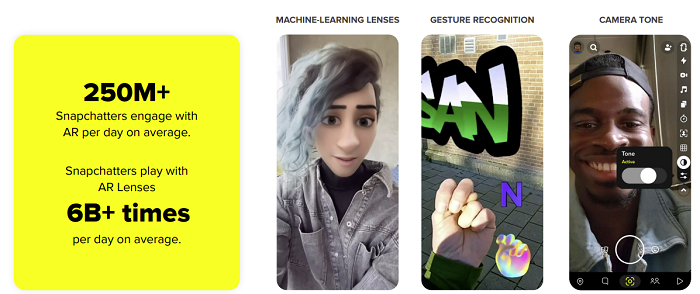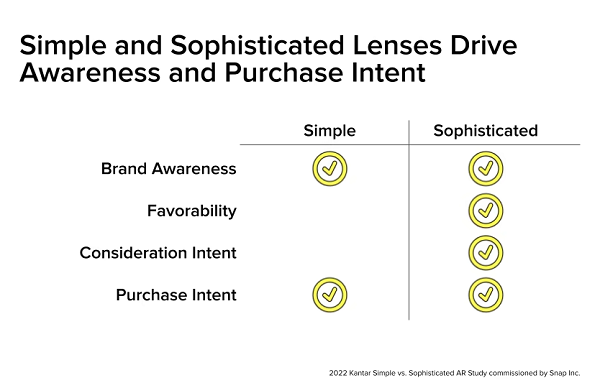The use of AR is growing, with Snapchat reporting that over 250 million of its users – or 72% of its active user base – engage with AR elements in the app every day.

As AR technology continues to evolve, so too do the ways in which it can be used for more creative, engaging applications, including promotions – and as more brands lean into these types of advanced activations, that then raises the bar for others to also follow suit.
But creating AR isn’t as easy as, say, writing a blog post or creating a video clip. It takes technical knowledge, system know-how, it takes professional skill to create unique brand experiences in this more advanced medium.
Right?
Well, that’s not entirely correct.
On Snapchat, one of the leaders in AR, you can create basic AR experiences, even branded ones, via its Lens Web Builder platform, which provides access to a range of 3D objects, animations, and templates to facilitate the creation of AR campaigns.
There are more advanced options too, in Lens Studio, which does require more technical knowledge, but will produce a better, more customized, more unique result.
But which is better – and do you need to go all-in on AR to create a resonant, effective campaign?
That’s what Snap sought to find out with its latest research report, partnering with Kantar to survey 7,800 people from the US, UK, France, and Saudi Arabia, to get their responses to simple AR Lenses, versus more sophisticated AR creative.
As per Snap:
“The research found that simple AR can be just as performant as a sophisticated, custom Lens in driving both upper and lower-funnel metrics like brand awareness and purchase intent. Brands with the resources to execute a more sophisticated Lens will see additional benefits in mid-funnel brand metrics, including favorability and consideration.”

So you don’t necessarily need to go too deep into 3D architecture to create resonant AR campaigns for your business – though if you can, it will help.
Snapchat does note, however, that the results vary by industry – and likely by campaign:
“For example, in the Auto category, we saw that both simple and sophisticated AR experiences drove brand awareness, proving there is value to both executions, depending on the goals of the campaign.”
Again, you don’t need to have most amazing, world-transforming AR execution to derive optimal benefits, but you do need to have creative nous, and an understanding of how that activation, like any ad, drives audience response.
“When we look at a category like Beauty – where the application of lipstick or mascara in AR can change the color of the user’s lips or extend their lashes – we saw that simple Lens executions can perform just as well in brand awareness and purchase intent as more sophisticated experiences.”
This example underlines the importance of factoring in the purpose of your promotion, and how AR can help in that, as opposed to using it as a gimmick or a perspective-alerting overlay.
Those can be great too, but there are also practical, valuable ways in which you can utilize simple AR executions within your promotions, which don’t require a doctorate in digital architecture or technology.
Which is interesting to note – and if you are interested, it’s worth checking out Lens Web Builder, or downloading Lens Studio to get a feel for what’s possible, and how you can create AR experiences in the app.
It’s not necessarily simple – I’ve messed around with AR tools at different times, and have created various Lenses that look okay, but are probably not fit for public consumption. But with a little persistence and effort, you can create reasonably good looking effects that could work for your promotions.
You can learn more about Snap’s Lens creation process here.



